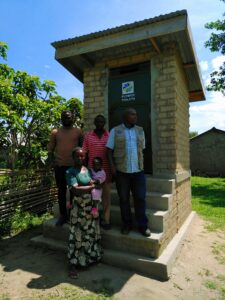Uganda – The inhabitants of the zones along the Semliki River are increasingly adopting Flower Toilets. These ecological latrines directly and indirectly protect the river.
Rivers are the lifeline of many communities across the world. Along the Semliki River in Uganda, this is definitely the case. Most houses and villages in this area have no piped water system or sanitation infrastructure. This means that people depend on the river and its tributaries for all their water needs, but at the same time the lack of infrastructure is threatening that very source of water.
For example, to create a toilet, people dig holes in the ground and build a small shed around it. Because this is happening so close to the river, the pits can leak into the groundwater and pollute the river. This pollution becomes even worse when the land along the river (and thus the pit latrines) are flooded. This even happened earlier this year! Floods regularly occur, inundating houses and latrine pits, further spreading water pollution. Imagine what will happen when floods occur more frequently as a result of climate change!

High and dry
So if we want to protect the Semliki river and its benefits to people in the context of climate change and population growth, we also have to think about what happens on land. Fortunately, there are mitigation solutions. Our partner NRDI has been building ecological toilets high and dry above the ground. They are built with ecological bricks (pressure is used instead of baking) and function without water. They also separate urine and feces, which can be further processed into fertilizers.
This is an example of climate resilient sanitation that also helps to protect (ground)water quality and the health of the Semliki river and its floodplains. This in turn helps the landscape to continue to provide water and other benefits to people.
And people are starting to notice, because since the flooding last year, the demand for ecological toilets is increasing rapidly!

With the support of the Flemish Government


